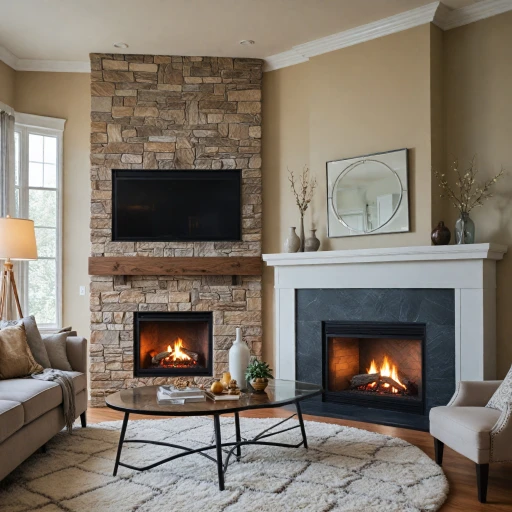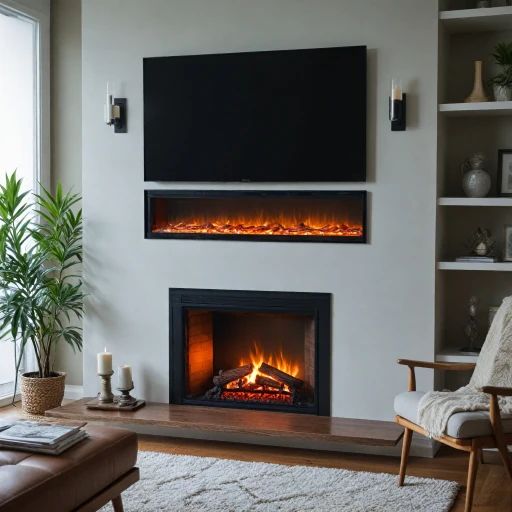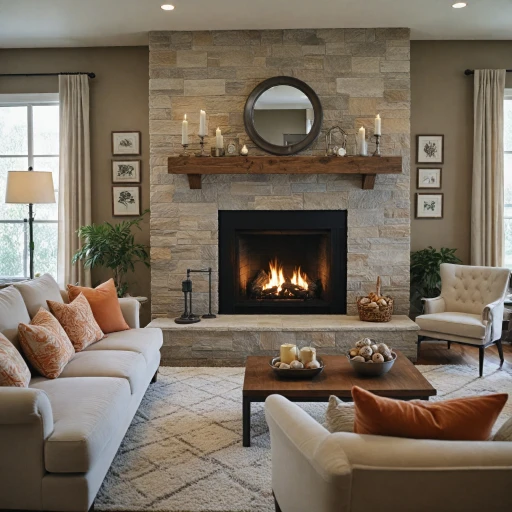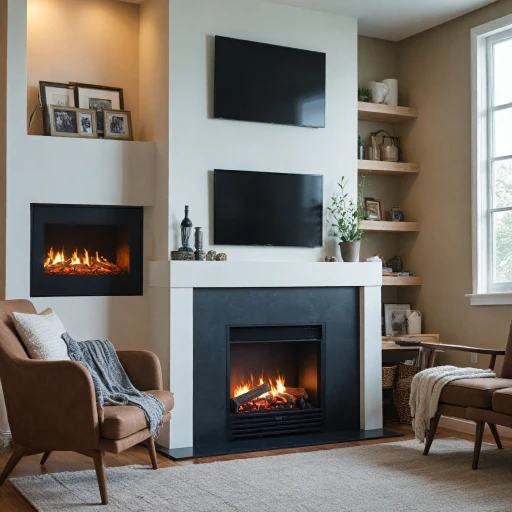
Understanding Electric Fireplaces
The Appeal of Electric Fireplaces
Electric fireplaces have soared in popularity as a go-to heating option, offering an attractive and practical alternative to gas and wood-burning models. These fireplaces are particularly appealing due to the realistic flame effects they provide without the mess and risk associated with traditional fireplaces. Imagine the warmth and cozy ambiance of a flaming fireplace in your room, minus the hassle of chopping wood or worrying about gas leaks.One of the key benefits is their ease of installation. Unlike their wood-burning or gas counterparts, electric models can simply be plugged into an existing power outlet. There’s no need for a chimney or vent system, which makes them ideal for modern homes and apartments where structural changes can be impractical or costly.
Energy Efficiency and Models
Electric fireplaces are known for their energy efficiency. They convert a higher percentage of electricity into heat compared to other fireplaces, leading to more effective heating of your room. This means lower energy bills and a reduced carbon footprint—something worth considering in today’s environmentally-conscious world.Variability in design and functionality also sets electric fireplaces apart. From fireplace inserts that fit into your existing wood or gas fireplace space to standalone models that can enhance your wall, there are options tailored to your unique preferences and needs. Many models come with adjustable flame and heat settings, giving you control over the ambiance and warmth of your home.
Whether you are looking to supplement your main heating system or want a primary heating source, electric fireplaces offer the flexibility and comfort you seek. Experience the warmth and convenience they bring, transforming your living area into a cozy retreat.
Venting: Is It Necessary?
Do You Need A Vent For Electric Models?
The thought of installing a fireplace often comes with the image of constructing a chimney or venting system for safe smoke expulsion. Fortunately, when it comes to electric fireplaces, this arduous step can be skipped. Since these models don’t burn wood or gas, there's no smoke or dangerous fumes to worry about, giving you the advantage of vent-free convenience.
Electric fireplaces operate by using a heating element and a fan, meaning no byproducts are released into the room. This makes them inherently safer and more environmentally friendly, coming with no requirement for a chimney, vent, or outside wall. Therefore, if you’re concerned about heat output or installation obstacles, rest assured that these fireplaces offer an easy-to-adopt solution.
Thanks to this, electric models can be installed in diverse spaces, including apartments and condos, without the limitations that traditional wood or gas variants impose. With the option of wall-mounted or freestanding installations, their versatility truly stands out, as mentioned under energy-efficient installations.
People often wonder about the safety of these vent-free zones. Since there's no actual flame involved — just a convincing illusion created by advanced technology — you can enjoy the ambiance without the worry of embers or smoke. It’s a simple, smart choice for those prioritizing comfort and safety in their heating solutions.
Advantages of Vent-Free Operation
Effortless Heat and Stylish Flames
When you think of installing a fireplace in your home, the traditional image might be of a wood burning hearth or maybe a gas fireplace. Yet, the contemporary vent-free electric fireplace models provide an enticing alternative with numerous perks.
No More Smoke, No More Soot
A key advantage of electric fireplaces is their clean ambiance. Unlike wood burning fireplaces that require chimneys and can fill your room with smoke or generate soot, electric fireplaces provide a hassle-free heating solution. They need no venting, which means no dealing with smoke stains or ash residues. Just plug in, switch on, and enjoy a flame that's as enchanting and cozy without any unwanted byproducts.
Saving Energy, Saving Space
Electric fireplaces not only reduce installation headache but also the energy footprint compared to other heating options. There's no need for extra ductwork or a designated wall space to accommodate venting. This means the installation's often quicker and cheaper, saving you both time and money.
Safety and Convenience Combined
There’s no denying that safety is top of mind when operating anything that might involve heat and flames. Electric fireplaces eliminate the worries about running gas lines or ensuring proper ventilation. They allow you to have the feel of a burning flame without the real heat of fire. With adjustable heat output options, they grant you the comfort of a perfectly warm room, while maintaining the aura of a traditional fireplace.
Traditional fireplaces require regular maintenance, but an electric fireplace requires considerably less attention. No need to clean chimneys or worry about fuel supplies. Just a simple wipe once in a while, and you are good to go, keeping your home warm and cozy without the usual hassles.
Installation Tips for Electric Fireplaces
Best Practices for Setting Up Electric Fireplaces
When it comes to installing an electric fireplace, ease and flexibility are significant perks. Unlike wood burning or gas fireplaces, the electric models usually don't need venting. And the best part? You can install electric fireplaces in several options, so you can get that cozy flame just where you need it. Here are some handy tips to follow for a smooth installation:- Choosing the Right Spot: Decide on the perfect place in your room. An empty wall or a nook, electric fireplaces are versatile. Remember, placing it near an outlet will save you trouble with extension cords.
- Mounting Options: You can install these on the floor, embed them into a wall, or hang them. Each option offers different aesthetic and space benefits, so choose what suits your room layout and style.
- Mind the Power Source: Make sure there's an electrical outlet nearby. Most models need a standard 110-volt outlet, so this shouldn't be a hassle.
- Safe Distance: Keep your electric fireplace at a safe distance from flammable items like curtains, furniture, and décor, just like you would with any other heat source.
- Follow Instructions: Read the manufacturer’s installation guidelines carefully. Each electric fireplace may have specific requirements and safety instructions. This ensures that the operation is as intended, both safely and efficiently.
- Professional Help: If in doubt, consult with a professional installer. They can ensure that everything is up and running correctly. Plus, it takes the stress out of handling electricity if you're not comfortable doing it yourself.
Maintenance and Care
Keeping Your Electric Fireplace in Top Shape
Maintaining your electric fireplace is like caring for a cherished member of your household—you want it to stay warm and inviting for years to come. Here's how to ensure it runs smoothly:- Regular Cleaning: Dust and debris can be a silent saboteur, so clean the exterior regularly. A gentle dusting helps keep your fireplace looking shiny and new.
- Inspect the Wiring: For safety reasons, it’s a good idea to periodically inspect the cords and connections. Ensure everything’s snug as a bug to avoid any sparks.
- Check the Heater: While electric fireplaces don’t produce actual flames, they generate heat. Make sure the blower and heater are operating well to keep your room as cozy as winter's first snowfall.
- Look at the Flame Display: Those faux flames can see more action than a Hollywood blockbuster over time. If something seems off, consult the user manual to recalibrate.
- Replace Bulbs as Needed: Some models use bulbs for their glowing effect. Over time, these might dim. Replacing them brings back the vibrancy that mimics a wood burning or gas fireplace.
- General Power Check: Ensure your power source meets the fireplace's needs. It's all about that robust connection for smooth operation and heat output.
Comparing Electric and Traditional Fireplaces
Comparing Flames and Ambiance
Electric fireplaces bring the charm of flickering flames without the need for wood or gas. They use LED lights to create realistic flame effects, offering a cozy atmosphere that rivals traditional wood burning fireplaces. Unlike wood or gas fireplaces, electric models don't require venting, making them a more flexible option for installation anywhere in your home.
Heat Output and Efficiency
When it comes to heating, electric fireplaces are often praised for their energy efficiency. They convert nearly all their energy into heat, unlike wood or gas fireplaces, which can lose heat through the chimney. This efficiency means they can effectively warm a room without the need for venting. However, if you're seeking the intense heat output of a traditional wood burning or gas fireplace, electric models might not match up. They are best for supplemental heating rather than primary heat sources.
Installation and Safety
Installing an electric fireplace is a breeze compared to the complex installation of gas or wood burning fireplaces. With no need for a chimney or gas lines, you can place an electric fireplace on any wall or even as a fireplace insert into an existing mantel. Safety is another strong point; electric fireplaces don't produce real flames, so there's no risk of accidental burns or carbon monoxide emissions. This makes them a safer choice for homes with children or pets.
Maintenance and Care
Electric fireplaces require minimal maintenance. There's no need to clean up ashes or worry about chimney sweeps. Simply dust the exterior and ensure the electrical components are functioning correctly. In contrast, wood and gas fireplaces demand more upkeep to keep them running safely and efficiently.
Cost Considerations
In terms of cost, electric fireplaces are generally more affordable upfront than their wood or gas counterparts. They also have lower installation costs since they don't require venting or complex setups. Over time, the energy-efficient nature of electric models can lead to savings on heating bills, although this depends on usage and local energy rates.












